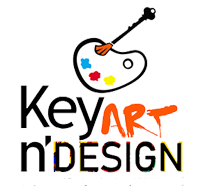| Full Exam Name | Undergraduate Common Entrance Examination for Design |
| Short Exam Name | UCEED |
| Conducting Body | Indian Institute of Technology Bombay |
| Frequency of Conduct | Once a year |
| Exam Level | National Level Exam |
| Languages | English |
| Mode of Application | Online |
| Application Fee (General) | 3500 Rs [Online] |
| Mode of Exam | Centre Based |
| Mode of Counselling | Online / Offline |
| Participating Colleges | 17 |
| Exam Duration | 3 Hours |
Exam Pattern UCEED
What are the exam details of UCEED?
What is the structure of UCEED exam?
| Section | Number of Questions | Question Numbers | Marks if Correct | Marks if Wrong | Marks if not Attempted | Total Marks |
| Part-A (240 marks, 2 hours 30 mins) | ||||||
| NAT | 18 | 1—18 | 4 | 0 | 0 | 72 |
| MSQ | 18 | 19—36 | 4 | −0.19 | 0 | 72 |
| MCQ | 32 | 37—68 | 3 | −0.71 | 0 | 96 |
| Part-B (60 marks, 30 mins) | ||||||
| 1 | 1 | 60 | 0 | 0 | 60 | |
| TOTAL (Part-A and Part-B combined): 300 Marks | ||||||
What is the generic syllabus for UCEED?
UCEED 2021 will have two parts. Part-A will have questions from the following topics:
- VISUALIZATION AND SPATIAL ABILITY
Pictorial and diagrammatic questions to test, understanding of transformation and/or manipulation of 2D shapes and 3D objects and their spatial relationships, knowledge of practical and everyday mechanical and scientific concepts.
- OBSERVATION AND DESIGN SENSITIVITY
Ability to detect concealed properties in ordinary things, people, situations, and events, and thinking critically about them. Applying attention to certain details, analysing, reasoning, classifying, inferring and predicting. Ability to discern subtle differences in visual properties and aesthetic outcomes.
- ENVIRONMENTAL AND SOCIAL AWARENESS
General awareness of environmental factors such as climate, population, water, vegetation, pollution, weather, natural resources etc., and their implications on the design of products, images, infrastructure and environment. Awareness of social and cultural connection with design, history of the designed artefact, and socially responsible and environmentally sustainable design responses. History of art, sculpture and literature.
- ANALYTICAL AND LOGICAL REASONING
Ability to look at information, be it qualitative or quantitative in nature, and discern patterns within the information. Ability to weigh opinions, arguments or solutions against appropriate criteria. Ability to check for hidden bias or hidden assumptions and whether evidence and argument support conclusions. Ability to use logic and structured thinking to deduce from a short passage, which of a number of statements is the most accurate response to a posed question. Data Interpretation, brainteasers, and patterns.
- LANGUAGE AND CREATIVITY
Ability to understand and use Standard English. Reading comprehension, knowledge of English grammar. Ability to think creatively in terms of alternatives, ability to distinguish innovative options and think out of the box.
- DESIGN THINKING AND PROBLEM SOLVING
Ability to use visual analogies, metaphors, signs and symbols. Ability to understand complexity, identify problem, generate alternatives, evaluate options and select solutions.
Part-B will have ONE question from the following topic:
- DRAWING
Ability to draw products, people or scenes in proportion with good line quality, composition, proportion, perspective, and shading.
